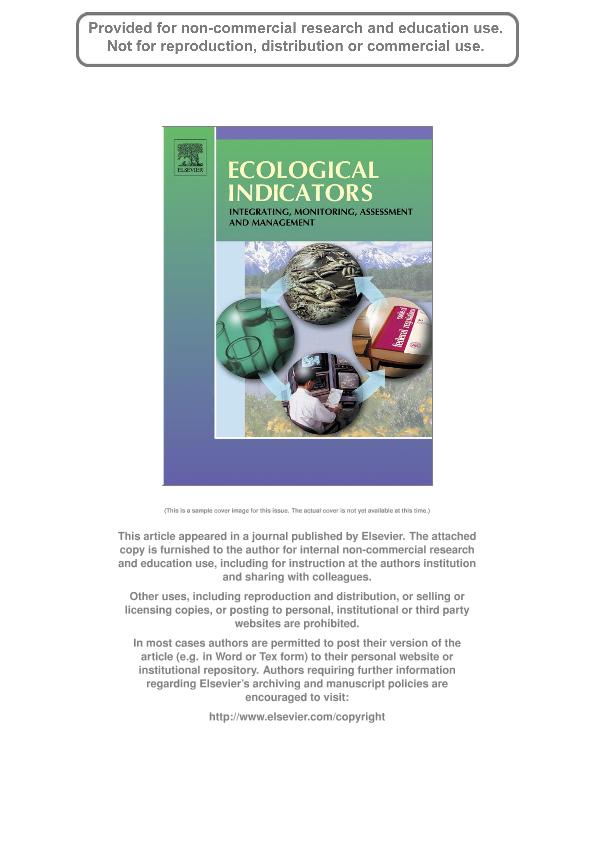Mostrar el registro sencillo del ítem
dc.contributor.author
López, Dardo Rubén
dc.contributor.author
Brizuela, Miguel Angel
dc.contributor.author
Willems, Priscila
dc.contributor.author
Aguiar, Martin Roberto

dc.contributor.author
Siffredi, Guillermo
dc.contributor.author
Bran, Donaldo Mauricio
dc.date.available
2016-02-05T19:37:11Z
dc.date.issued
2013-01
dc.identifier.citation
López, Dardo Rubén; Brizuela, Miguel Angel; Willems, Priscila; Aguiar, Martin Roberto; Siffredi, Guillermo; et al.; Linking ecosystem resistance, resilience, and stability in steppes of North Patagonia; Elsevier; Ecological Indicators; 24; 1-2013; 1-11
dc.identifier.issn
1470-160X
dc.identifier.uri
http://hdl.handle.net/11336/4083
dc.description.abstract
The main objective of an ecosystem sustainable management is to preserve its capacity to respond and adapt to current disturbances and/or future changes, and maintain the provision of environmental goods and services. Two very important properties linked to this objective are the ecosystem resilience and resistance to disturbance factors. The Structural–Functional State and Transition Model (SFSTM) is a conceptual framework that allows evaluating the ecosystem resilience and resistance based on structural and functional attributes. On the other hand, the Landscape Functional Analysis (LFA) presents a method to assess the rangeland “health” based on structural vegetation and soil indicators, creating indexes to evaluate the ecosystem functional integrity. The aim of this study is to integrate LFA and SFSTM as an approach to help validate indicators and indexes associated with the resistance, resilience, and stability of a temperate rangeland ecosystem. States and transitions model for a shrubby-grasses steppe of the Western Patagonian District was used as a reference system. Changes in vegetation structure, soil surface, and loss of soil due to erosion were determined in sites with different grazing histories. Based on the SFSTM, we assessed the relationships between ecosystem structural changes with the recruitment process of the plant community and ecosystem integrity indexes (sensu LFA). Our results indicate that the decrease in the recruitment process, related to different grazing histories, was associated with a loss of ecosystem functional integrity. This was associated to a decrease in the ability to retain, store, and use rain water, and also in nutrient cycling. This suggests that the integration of the LFA methodology to the SFSTM can be used for indexes validation, which in turn allows the identification of critical thresholds associated with ecosystem resilience loss. Finally, throughout the integration of indicators of LFA into SFSTM, we established relationships between ecosystem resistance, resilience, and stability in response to a disturbance factor (e.g. overgrazing). Thus, we used this information to define states in stable, unstable, mixed-unstable, and indifferent-stable dynamic equilibriums. Our proposed approach provides a tool for ecosystem assessment regarding the identification of states that can be restored and those that might be more susceptible to degradation. Such information might help in the prevention of crossing a critical threshold and be used for sustainable management programs in rangelands.
dc.format
application/pdf
dc.language.iso
eng
dc.publisher
Elsevier

dc.rights
info:eu-repo/semantics/openAccess
dc.rights.uri
https://creativecommons.org/licenses/by-nc-nd/2.5/ar/
dc.subject
Equilibrium
dc.subject
State And Transition
dc.subject
Integrity Index
dc.subject
Threshold
dc.subject.classification
Ecología

dc.subject.classification
Ciencias Biológicas

dc.subject.classification
CIENCIAS NATURALES Y EXACTAS

dc.title
Linking ecosystem resistance, resilience, and stability in steppes of North Patagonia
dc.type
info:eu-repo/semantics/article
dc.type
info:ar-repo/semantics/artículo
dc.type
info:eu-repo/semantics/publishedVersion
dc.date.updated
2016-03-30 10:35:44.97925-03
dc.journal.volume
24
dc.journal.pagination
1-11
dc.journal.pais
Países Bajos

dc.journal.ciudad
Amsterdam
dc.description.fil
Fil: López, Dardo Rubén. Instituto Nacional de Tecnología Agropecuaria. Centro Regional Patagonia Norte. Estación Experimental Agropecuaria San Carlos de Bariloche; Argentina
dc.description.fil
Fil: Brizuela, Miguel Angel. Universidad Nacional de Mar del Plata. Facultad de Ciencias Agrarias; Argentina
dc.description.fil
Fil: Willems, Priscila. Instituto Nacional de Tecnología Agropecuaria. Centro Regional Patagonia Norte. Estación Experimental Agropecuaria San Carlos de Bariloche; Argentina
dc.description.fil
Fil: Aguiar, Martin Roberto. Consejo Nacional de Investigaciones Científicas y Técnicas. Oficina de Coordinación Administrativa Parque Centenario. Instituto de Investigaciones Fisiológicas y Ecológicas Vinculadas a la Agricultura; Argentina. Universidad de Buenos Aires. Facultad de Agronomia; Argentina
dc.description.fil
Fil: Siffredi, Guillermo. Instituto Nacional de Tecnología Agropecuaria. Centro Regional Patagonia Norte. Estación Experimental Agropecuaria San Carlos de Bariloche; Argentina
dc.description.fil
Fil: Bran, Donaldo Mauricio. Instituto Nacional de Tecnología Agropecuaria. Centro Regional Patagonia Norte. Estación Experimental Agropecuaria San Carlos de Bariloche; Argentina
dc.journal.title
Ecological Indicators

dc.relation.alternativeid
info:eu-repo/semantics/altIdentifier/url/http://www.sciencedirect.com/science/article/pii/S1470160X12002130
dc.relation.alternativeid
info:eu-repo/semantics/altIdentifier/issn/1470-160X
dc.relation.alternativeid
info:eu-repo/semantics/altIdentifier/doi/http://dx.doi.org/10.1016/j.ecolind.2012.05.014
Archivos asociados
